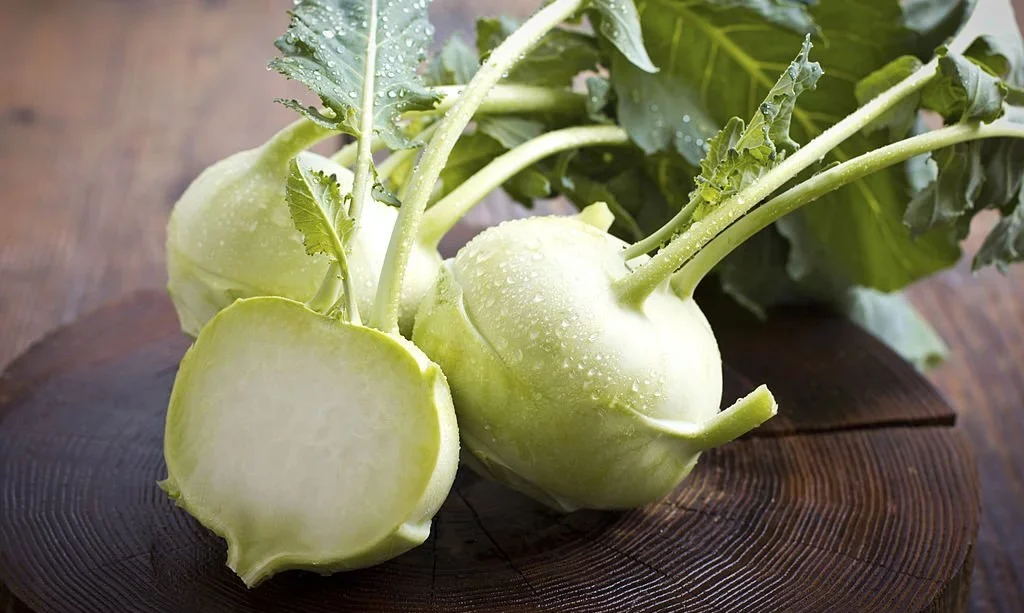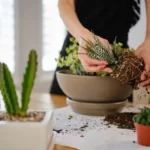Are you a fan of the crunchy and delicious kohlrabi and want to make it last longer? Well, you’re in luck! Properly storing kohlrabi is the secret to preserving its freshness and flavor for extended periods. In this guide, we’ll explore the simple steps you can take to store kohlrabi and enjoy its goodness whenever you want.
Harvesting Kohlrabi
Before we dive into storage techniques, it’s important to know when and how to harvest kohlrabi. Here are some key points to consider:
- Harvesting Time: Kohlrabi is typically ready for harvest when the bulbs reach about 2-3 inches in diameter. This usually occurs around 50-60 days after sowing the seeds. Younger bulbs tend to be more tender and flavorful.
- Checking Bulb Firmness: Gently press the bulb with your finger to check its firmness. A mature kohlrabi bulb should feel firm and solid. If it feels spongy or soft, it may be overripe or past its prime.
- Harvesting Technique: To harvest kohlrabi, use a sharp knife or garden shears. Cut the stem about 1 inch above the bulb, ensuring you don’t damage the bulb itself. Leave the leaves attached to the bulb as they can be enjoyed in recipes or used as garnish.
- Harvesting Young Leaves: If you prefer tender kohlrabi leaves, you can harvest them when they are about 4-6 inches long. Snip off the leaves close to the stem, leaving a few leaves intact to support continued growth.
By harvesting kohlrabi at the right time and using proper techniques, you can ensure the best quality and flavor for your stored kohlrabi. Now let’s move on to the next step: preparing kohlrabi for storage.
Preparing Kohlrabi for Storage
To maximize the shelf life of your kohlrabi, proper preparation is key. Follow these simple steps to get your kohlrabi ready for storage:
- Removing Leaves and Excess Dirt: Gently twist or cut off the leaves from the bulb, leaving about an inch of stem intact. Removing the leaves helps prevent moisture loss and keeps the bulb fresh. Brush off any excess dirt or soil clinging to the bulb.
- Trimming the Stems and Roots: Use a clean knife or scissors to trim the stems close to the bulb. Also, trim any long or protruding roots. This ensures a neater appearance and helps prevent moisture loss.
- Washing and Drying the Kohlrabi: Rinse the bulbs under cool running water to remove any remaining dirt. Pat them dry with a clean cloth or paper towel. Moisture on the surface can promote rot, so it’s essential to ensure they are completely dry before storing.
Short-Term Storage Options
If you plan to use your kohlrabi within a few weeks, short-term storage options are ideal. Here are a couple of methods to keep your kohlrabi fresh and crisp:
- Refrigerator Storage: Place the prepared kohlrabi in a perforated plastic bag or wrap it loosely in a damp cloth or paper towel. This helps maintain the right moisture balance. Store the wrapped kohlrabi in the refrigerator’s vegetable drawer. It will stay fresh for up to 2-3 weeks.
- Crisper Drawer Storage: If your refrigerator has a crisper drawer with adjustable humidity settings, use it to store your kohlrabi. Set the humidity level to high, as kohlrabi prefers slightly higher humidity. Keep the kohlrabi separated from other produce to avoid potential spoilage or flavor transfer.
By properly preparing and using these short-term storage methods, you can enjoy the crispness and flavor of your kohlrabi for an extended period. But what if you want to store kohlrabi for an even longer time? Don’t worry, we’ll explore long-term storage options next!
Long-Term Storage Options
If you want to store kohlrabi for an extended period, you have a couple of options that can help preserve its freshness. Here are two long-term storage methods to consider:
- Freezing Kohlrabi: Freezing is a great way to store kohlrabi for several months. Start by blanching the prepared kohlrabi in boiling water for 2-3 minutes, then immediately transfer it to an ice bath to cool. Drain the kohlrabi and pack it into airtight freezer bags or containers. Label them with the date and store them in the freezer. Frozen kohlrabi can be used in cooked dishes like stir-fries or soups.
- Fermenting or Pickling Kohlrabi: Another fantastic way to store kohlrabi is by fermenting or pickling it. Slice or dice the kohlrabi and pack it into sterilized jars. Prepare a brine solution using water, salt, and vinegar or other pickling spices. Pour the brine over the kohlrabi, ensuring it is fully covered. Seal the jars and store them in a cool, dark place for a few weeks to allow the flavors to develop. Fermented or pickled kohlrabi adds tang and crunch to salads, sandwiches, or as a side dish.
Tips for Extending Shelf Life
To maximize the shelf life of your stored kohlrabi and keep it in top condition, consider the following tips:
- Regularly Inspect Stored Kohlrabi: Check your stored kohlrabi periodically for any signs of spoilage or mold. Remove any damaged or rotting pieces to prevent them from affecting the rest.
- Discard Spoiled or Damaged Kohlrabi: If you notice any signs of mold, decay, or off smells, it’s best to discard the affected kohlrabi to prevent the spread of spoilage to other pieces.
- Utilize Stored Kohlrabi Timely: Plan your meals and use the stored kohlrabi in a timely manner. Freshness and flavor are best when consumed sooner rather than later.
Conclusion
With the proper storage techniques, you can extend the life of your kohlrabi and enjoy its crispness and taste for an extended period. Whether you choose short-term refrigeration, freezing, or long-term methods like fermenting or pickling, each option allows you to preserve the goodness of kohlrabi in different ways. By following these tips and techniques, you can savor the flavors of kohlrabi throughout the year, adding a delightful crunch to your favorite dishes. So, store your kohlrabi with care, and let it continue to bring joy to your culinary adventures!




